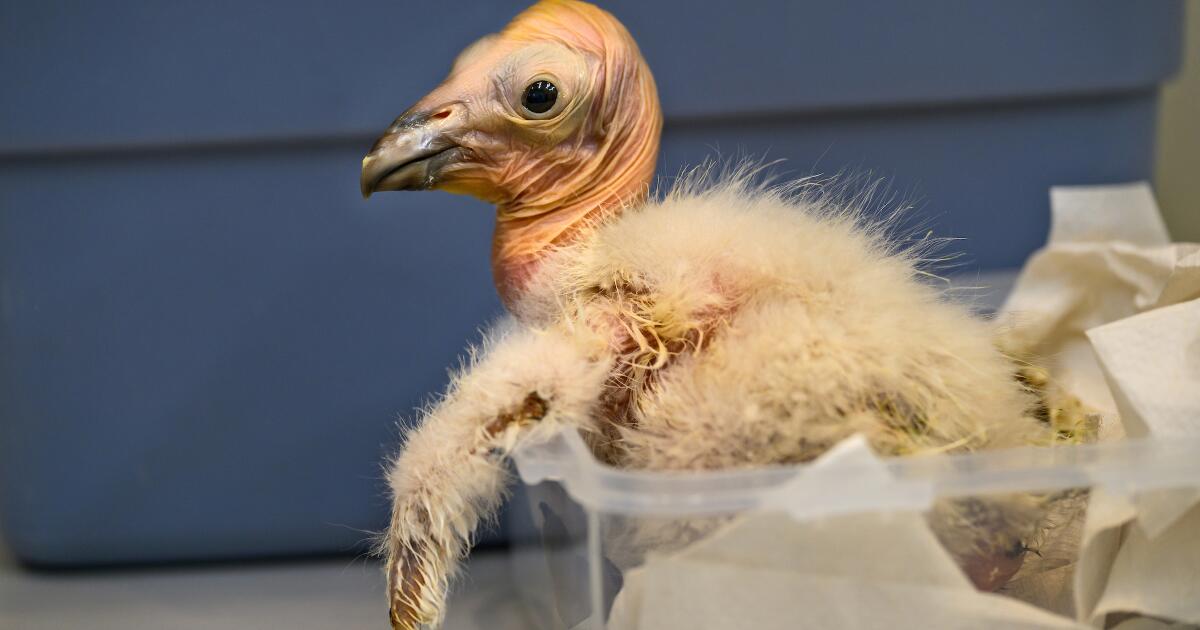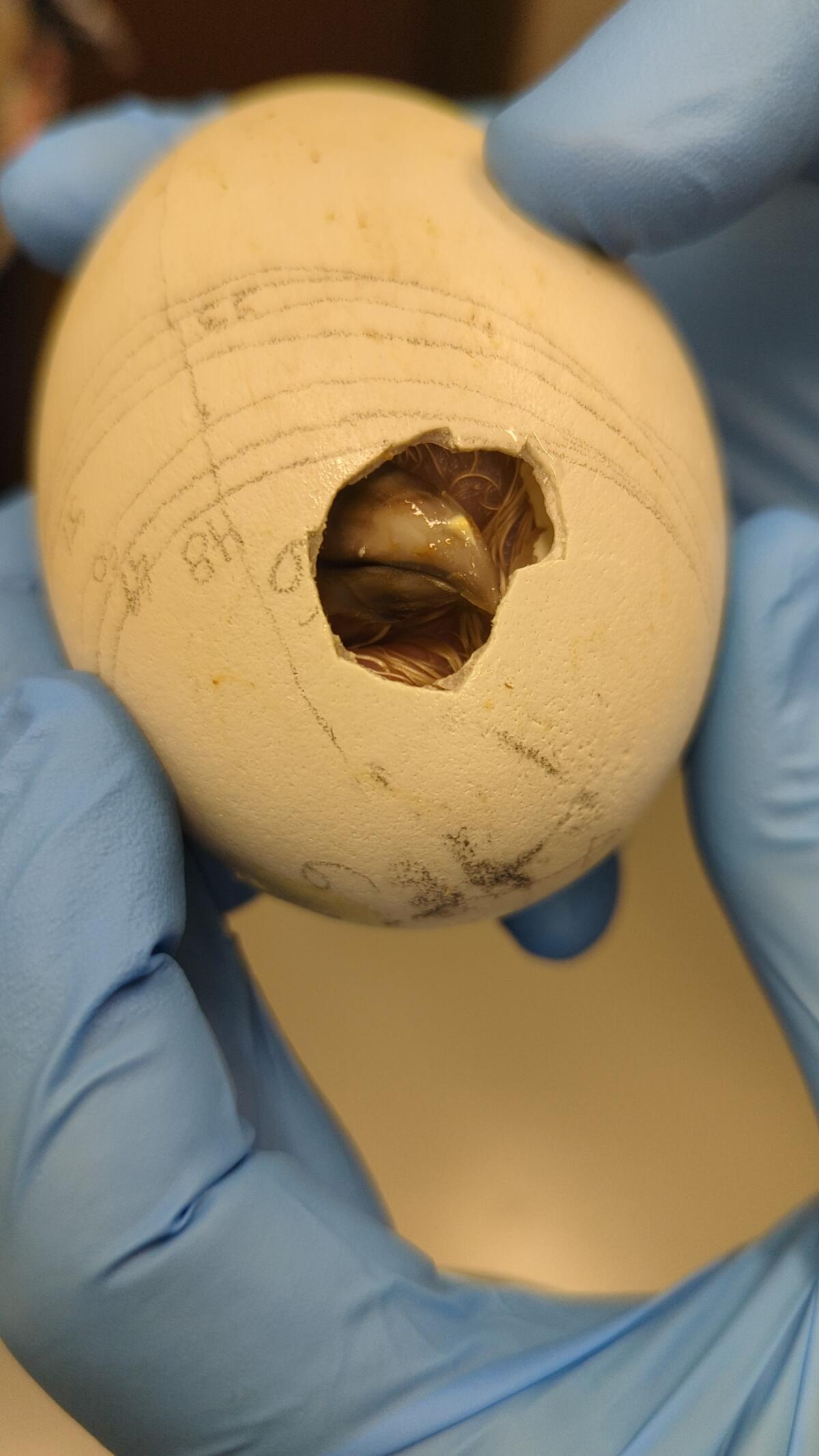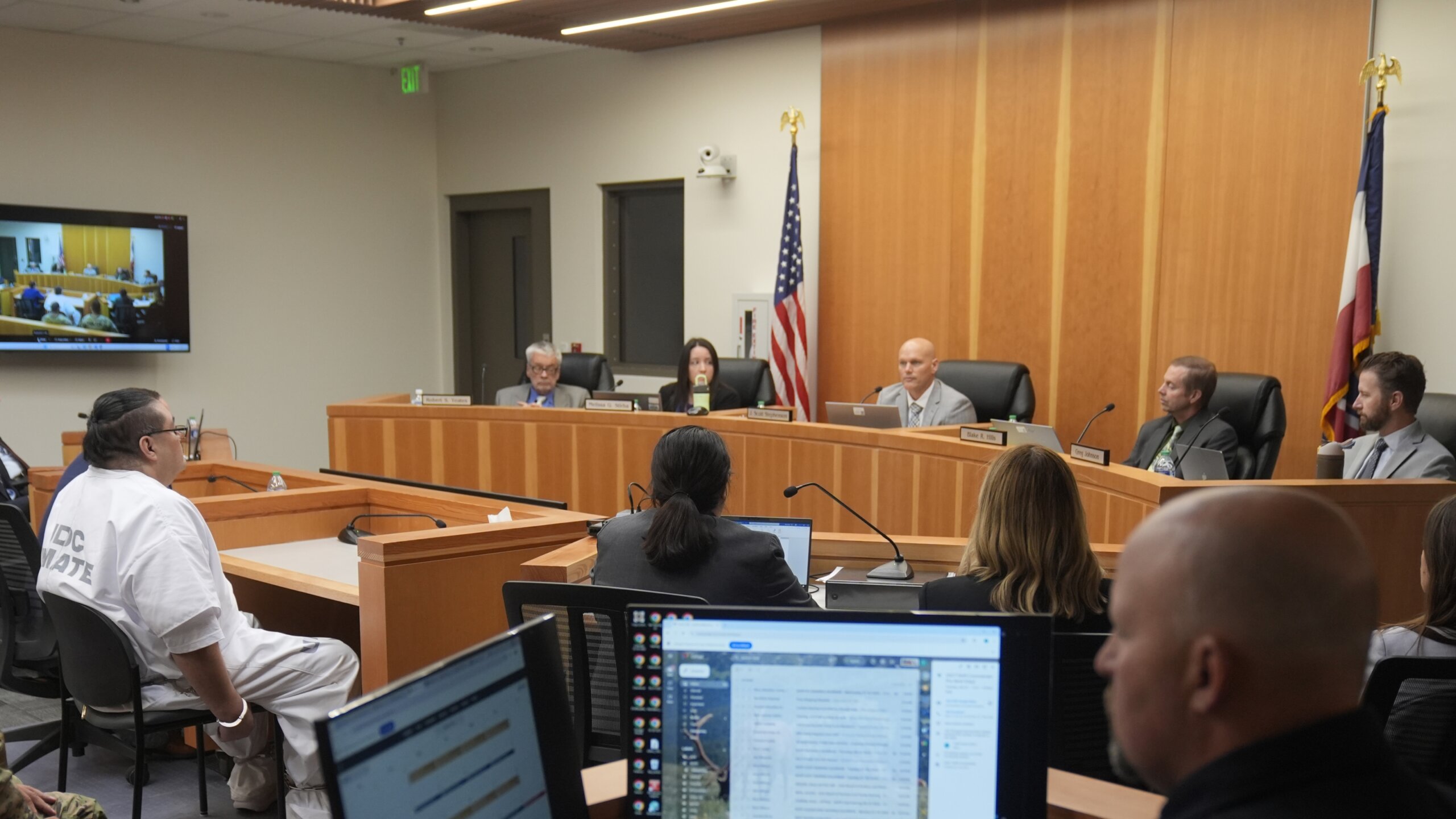Science
Carbon Dioxide Levels Have Passed a New Milestone

Source: National Oceanic and Atmospheric Administration’s Global Monitoring Laboratory
The chart shows monthly numbers of carbon dioxide molecules per million molecules of dry air. Because of seasonal differences, levels are higher in May than in August.
Carbon dioxide acts like Earth’s thermostat: The more of it in the air, the more the planet warms.
In 2023, global levels of the greenhouse gas rose to 419 parts per million, around 50 percent more than before the Industrial Revolution. That means there are roughly 50 percent more carbon dioxide molecules in the air than there were in 1750.
As carbon dioxide builds up in the atmosphere, it traps heat and warms the planet.
Source: NOAA (carbon dioxide); NASA (temperature)
The chart shows the change in global surface temperature relative to 1951–1980, versus global carbon dioxide levels. The dotted line shows the trend line.
More carbon dioxide, warmer temperatures
Every additional amount of carbon dioxide in the atmosphere contributes to more warming, which is why climate scientists stress the need to get to zero emissions.
Currently, carbon dioxide levels are rising at near-record rates.
According to data released by the National Oceanic and Atmospheric Administration’s Global Monitoring Laboratory earlier this month, last year had the fourth-highest annual rise in global carbon dioxide levels.
Source: NOAA’s Global Monitoring Laboratory The chart shows the increase in global carbon dioxide levels over the course of each year. In 2023, they grew by around 2.8 parts per million.
Annual change in carbon dioxide levels
The long-term rise in carbon dioxide levels is caused by burning fossil fuels, as well as other human activities such as deforestation and concrete production.
But there is also a lot of variation from year to year, which you can see in the chart above.
How much carbon dioxide levels rise in a given year depends on two factors: the amount of fossil fuels burned globally, and the share of these emissions that are absorbed by the land and the ocean.
Consider the first factor: While it’s true that clean energy production is rising globally, so is the demand for energy.
Fossil fuels have made up the difference. This is why global fossil fuel emissions are still at record-high values (with a brief dip during the pandemic). And they stayed high in 2023, according to a projection by the Global Carbon Budget.
Not all of these emissions end up in the air. The ocean and land absorb roughly half of the carbon dioxide that humans emit, while the rest stays in the air, said Glen Peters, a senior researcher at the CICERO Center for International Climate Research.
Source: Global Carbon Budget The chart shows the net amounts of carbon dioxide emissions absorbed by the atmosphere, land and ocean. The emissions are produced by burning fossil fuels, deforestation and other human activities. Data does not include 2023.
Where do carbon dioxide emissions go?
That one-half figure is an approximation. It varies from year to year depending on weather conditions and other environmental factors, resulting in the jagged lines you see in the chart above. For example, in a warm and dry year with many wildfires, the land may absorb less carbon dioxide than usual.
As the Earth warms further, climate scientists expect the land and the ocean to absorb a smaller share of carbon dioxide emissions, causing a larger share to end up in the air, said Doug McNeall, who studies these effects at Britain’s Met Office.
Xin Lan, the lead scientist responsible for NOAA’s global carbon dioxide measurements, referred to the natural absorption as a “carbon discount.”
“We pay attention to it because we don’t know at which point that this discount is gone,” she said.
In addition to carbon dioxide, the levels of other potent greenhouse gases like methane and nitrous oxide are also on the rise, which further contribute to warming.
An exceptional year
2023 was unusually hot, both on land and in the ocean. (The oceans absorb over 90 percent of the excess heat caused by global warming.) It was the hottest year in over 170 years of record keeping, even exceeding scientists’ predictions.
One contributing factor to 2023’s extreme heat was El Niño, a climate pattern that tends to raise global temperatures. During El Niño, warm ocean currents in the Pacific Ocean cause warmer and drier weather in the tropics. This can lead to droughts that slow the growth of trees and increase the risk of wildfires.
When this happens, the land tends to absorb less carbon dioxide, and more of it ends up in the air. Several climate scientists said this may be why last year’s rise in carbon dioxide levels was substantially higher than in the years preceding it.
Getting to zero
The current high emissions levels make the climate goal of limiting global warming to 1.5 degrees Celsius increasingly difficult to reach.
To limit warming to this threshold, experts say countries need to slam the brakes on global emissions and bring them down to near-zero in about a decade. And some are even considering more extreme technological solutions to help bridge the gap.
Even if global emissions were brought down to half of their current value, we would still continue to add carbon dioxide to the air, causing further warming.
“You need to bring them essentially down to zero in order to stop warming,” Mr. McNeall said.
How much more warming will occur depends on how long it takes for this to happen.
On one hand, clean energy investments are booming, and renewable energy production is rising globally. But energy demand is also projected to rise, coal power plants are still being built, and some sectors of the economy — like construction and manufacturing — are harder to decarbonize, making the task ahead a steep challenge.
Even if the world exceeds the 1.5-degree threshold, “every fraction of a degree matters,” Mr. McNeall said.
“The closer that you can get to that threshold, the better.”
About the data
NOAA’s annual global carbon dioxide measurements are an average of thousands of measurements made near sea level at about 30 locations around the world. To account for local differences in humidity, measurements are made using dry air.

Science
Q&A: Learn how Olympians keep their cool from Team USA's chief sports psychologist

Your morning jog or weekly basketball game may not take place on an Olympic stage, but you can use Team USA’s techniques to get the most out of your exercise routine.
It’s not all about strength and speed. Mental fitness can be just as important as physical fitness.
That’s why the U.S. Olympic & Paralympic Committee created a psychological services squad to support the mental health and mental performance of athletes representing the Stars and Stripes.
“I think happy, healthy athletes are going to perform at their best, so that’s what we’re striving for,” said Jessica Bartley, senior director of the 15-member unit.
Bartley studied sports psychology and mental health after an injury ended her soccer career. She joined the USOPC in 2020 and is now in Paris with Team USA’s 592 competitors, who range in age from 16 to 59.
Bartley spoke with The Times about how her crew keeps Olympic athletes in top psychological shape, and what the rest of us can learn from them. Her comments have been edited for length and clarity.
Why is exercise good for mental health?
It gets you moving. It gets the endorphins going. And there’s often a lot of social aspects that are really helpful.
There are a number of sports that stretch your brain in ways that can be really, really valuable. You’re thinking about hand-eye coordination, or you’re thinking about strategy. It can improve memory, concentration, even critical thinking.
What’s the best way to get in the zone when it’s time to compete?
When I work with athletes, I like to understand what their zone is. If a 0 or a 1 is you’re totally chilled out and a 10 is you’re jumping around, where do you need to be? What’s your number?
People will say, “I’m at a 10 and I need to be at an 8 or a 7.” So we’ll talk about ways of bringing it down, whether it’s taking a deep breath, listening to relaxing music, or talking to your coach. Or there’s times when people say they need to be more amped up. That’s when you see somebody hitting their chest, or jumping up and down.
If you make a mistake in the middle of a competition, how do you move on instead of dwelling on it?
I often teach athletes a reset routine. I played goalie, so I had a lot of time to think after getting scored on. I would undo my goalie gloves and put them back on, which to me was a reset. I would also wear an extra hairband on my wrist, and when I would snap it, that meant I needed to get out of my head.
It’s not just a physical reset — it helps with a mental reset. If you do the same thing every single time, it goes through the same neural pathway to where it’s going to reset the brain. That can be really impactful.
Do Olympic athletes have to deal with burnout?
Oh, yeah. Everybody has a day where they don’t want to do whatever it is. That’s when you have to ask, “What’s in my best interests? Do I need a recovery day, or do I really need to get in the pool, or get in the gym?”
Sometimes you really do need what we like to refer to as a mental health day.
How can you psych yourself up for a workout when you just aren’t feeling it?
It’s really helpful to think about why you’re doing this and why you’re pushing yourself. Do you have goals related to an activity or sport? Is there something tied to values around hard work or discipline, loyalty or dependability?
When you don’t want to get in the gym, when you don’t want to go for a run, think about something bigger. Tie it back to values.
Is sleep important for maintaining mental health?
Yes! We started doing mental health screens with athletes before the Tokyo Games. We asked about depression, anxiety, disordered eating and body image, drugs and alcohol, and sleep. Sleep was actually our No. 1 issue. It’s been a huge initiative for us.
How much sleep should we be getting?
It’s different for everyone, but generally we know seven to nine hours of sleep is good. Sometimes some of these athletes need 10 hours.
I highly recommend as much sleep as you need. If you didn’t get enough sleep, napping can be really valuable.
Is napping just for Olympic athletes or is it good for everybody?
Everybody! Naps are amazing.
What if there’s no time for a nap?
There are different ways of recharging. Naps could be one of them, but maybe you just need to get off your feet for 20 minutes. Maybe you need to do a meditation or mindfulness exercise and just close your eyes for five minutes.
How do you minimize the effects of jet lag?
We try to shift one hour per day. That’s the standard way of doing it. If you can, it’s super helpful. But it’s not always possible.
The thing we tell athletes is that our bodies are incredible, and you will even things out if you can get back on schedule. One or two nights of crummy sleep is not going to impact your overall performance.
What advice do you give athletes who have trouble falling asleep the night before a competition?
You don’t want to change much right before a competition, so I usually direct athletes to do what they would normally do.
Do you need to unwind by reading a book? Do you need to talk on the phone with somebody and get your mind off things? Can you put your mind in a really restful place and think about things that are really relaxing?
Are there any mindfulness or meditation exercises that you find helpful?
There are some athletes who benefit greatly from an hourlong meditation. I love something quick, something to reset my brain, maybe close my eyes for a minute.
If I’m feeling like I need to take a moment, I love mindful eating. You savor a bite and go, “Oh, my gosh, I have not been fully engaged with my senses today.” Or you could take a mindful walk and take in the sights, the smells, all of the things that are around you.
What do you eat when you need a quick nutrition boost?
Cashews. I tend to carry those with me. They’ve got enough energy to make sure I keep going, physically.
I’ve always got gummy bears on me too. There’s no nutritional value but they keep me going mentally. I’m a big proponent of both.
Is it OK to be superstitious in sports?
It depends how flexible you are. Maybe you put on your socks or shoes a certain way, or listen to certain music. Routines are really soothing. They set your brain up for success in a particular performance. It can be really, really helpful.
But I’ve also seen an athlete forget their lucky underwear or their lucky socks, and they’re all out of sorts. So your routine has to be flexible enough that you’re not going to completely fall apart if you don’t do it exactly.
Are Olympians made of stronger psychological stuff than the rest of us?
Not necessarily. There are some who don’t get feathers ruffled and have a high tolerance for the fanfare. There’s also a lot of regular human beings who just happen to be fantastic at a particular activity.
Science
‘Ready, Steady, Slow’: Championship Snail Racing at 0.006 M.P.H.

Earlier this month, the rural village of Congham, England, played host to a less likely group of athletes: dozens of garden snails. They had gathered to compete in the World Snail Racing Championships, where the world record time for completing the 13.5 inch course stands at 2 minutes flat. At that speed — roughly 0.006 miles per hour — it would take the snails more than six days to travel a mile.
Science
Caring for condor triplets! Record 17 chicks thrive at L.A. Zoo under surrogacy method

A new method of rearing California condors at the Los Angeles Zoo has resulted in a record-breaking 17 chicks hatched this year, the zoo announced Wednesday.
All of the newborn birds will eventually be considered for release into the wild under the U.S. Fish and Wildlife Service’s California Condor Recovery Program, a zoo spokesperson said.
“What we are seeing now are the benefits of new breeding and rearing techniques developed and implemented by our team,” zoo bird curator Rose Legato said in a statement. “The result is more condor chicks in the program and ultimately more condors in the wild.”
Breeding pairs of California condors live at the zoo in structures the staff “affectionately calls condor-miniums,” spokesperson Carl Myers said. When a female produces a fertilized egg, the egg is moved to an incubator. As its hatching approaches, the egg is placed with a surrogate parent capable of rearing the chick.
California condor eggs are cared for at L.A. Zoo. The animal is critically endangered.
(Jamie Pham / L.A. Zoo)
This bumper year of condor babies is the result of a modification to a rearing technique pioneered at the L.A. Zoo.
Previously, when the zoo found itself with more fertilized eggs than surrogate adults available, staff raised the young birds by hand. But condors raised by human caretakers have a lower chance of survival in the wild (hence the condor puppets that zookeepers used in the 1980s to prevent young birds from imprinting on human caregivers).
In 2017, the L.A. Zoo experimented with giving an adult bird named Anyapa two eggs instead of one. The gamble was a success. Both birds were successfully released into the wild.
Faced with a large number of eggs this year, “the keepers thought, ‘Let’s try three,’” Myers said. “And it worked.”
The zoo’s condor mentors this season ultimately were able to rear three single chicks, eight chicks in double broods and six chicks in triple broods. The previous record number of 15 chicks was set in 1997.
Condor experts applauded the new strategy.
“Condors are social animals and we are learning more every year about their social dynamics. So I’m not surprised that these chick-rearing techniques are paying off,” said Jonathan C. Hall, a wildlife ecologist at Eastern Michigan University. “I would expect chicks raised this way to do well in the wild.”
The largest land bird in North America with an impressive wingspan up to 9½ feet, the California condor could once be found across the continent. Its numbers began to decline in the 19th century as human settlers with modern weapons moved into the birds’ territory. The scavenger species was both hunted by humans and inadvertently poisoned by lead bullet fragments embedded in carcasses it ate. The federal government listed the birds as an endangered species in 1967.

A condor, one of a record-breaking 17 at the zoo, makes its way out of its shell.
(Jamie Pham / L.A. Zoo)
When the California Condor Recovery Program began four decades ago, there were only 22 California condors left on Earth. As of December, there were 561 living individuals, with 344 of those in the wild. Despite the program’s success in raising the population’s numbers, the species remains critically endangered.
In addition to the ongoing threat of lead poisoning, the large birds are also at risk from other toxins. One 2022 study found more than 40 DDT-related compounds in the blood of wild California condors — chemicals that had made their way from contaminated marine life to the top of the food chain.
“Despite our success in returning condors to the wild, free-flying condors continue to face many obstacles with lead poisoning being the No. 1 cause of mortality,” said Joanna Gilkeson, spokesperson for Fish and Wildlife’s Pacific Southwest Region. “Innovative strategies, like those the L.A. Zoo is implementing, help us to produce more healthy chicks and continue releasing condors into the wild.”
The chicks will remain in the zoo’s care for the next year and a half before they are evaluated for potential release to the wild. Thus far, the zoo has contributed 250 condor chicks to Fish and Wildlife’s program, some of which the agency has redeployed to other zoos as part of its conservation efforts.
In a paper published earlier this year, a team of researchers found that birds born in captivity have slightly lower survival rates for their first year or two but then have equally successful outcomes to wild-hatched birds.
“Because condors reproduce slowly, releases of captive-bred birds are essential to the recovery of the species, especially in light of ongoing losses due to lead-related mortality,” said Victoria Bakker, a quantitative ecologist at Montana State University and lead author of the paper. “The team at the L.A. Zoo should be recognized for their innovative and important contributions to condor recovery.”
-

 World1 week ago
World1 week agoOne dead after car crashes into restaurant in Paris
-

 Midwest1 week ago
Midwest1 week agoMichigan rep posts video response to Stephen Colbert's joke about his RNC speech: 'Touché'
-

 News1 week ago
News1 week agoVideo: Young Republicans on Why Their Party Isn’t Reaching Gen Z (And What They Can Do About It)
-

 News1 week ago
News1 week agoIn Milwaukee, Black Voters Struggle to Find a Home With Either Party
-

 Politics1 week ago
Politics1 week agoFox News Politics: The Call is Coming from Inside the House
-

 News1 week ago
News1 week agoVideo: J.D. Vance Accepts Vice-Presidential Nomination
-

 Movie Reviews1 week ago
Movie Reviews1 week agoMovie Review: A new generation drives into the storm in rousing ‘Twisters’
-

 World1 week ago
World1 week agoTrump to take RNC stage for first speech since assassination attempt















